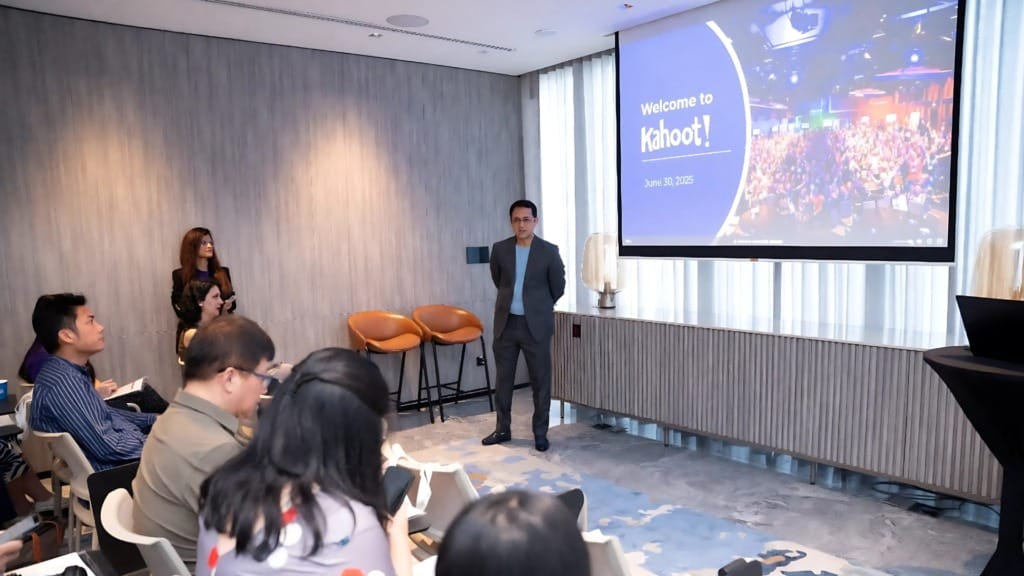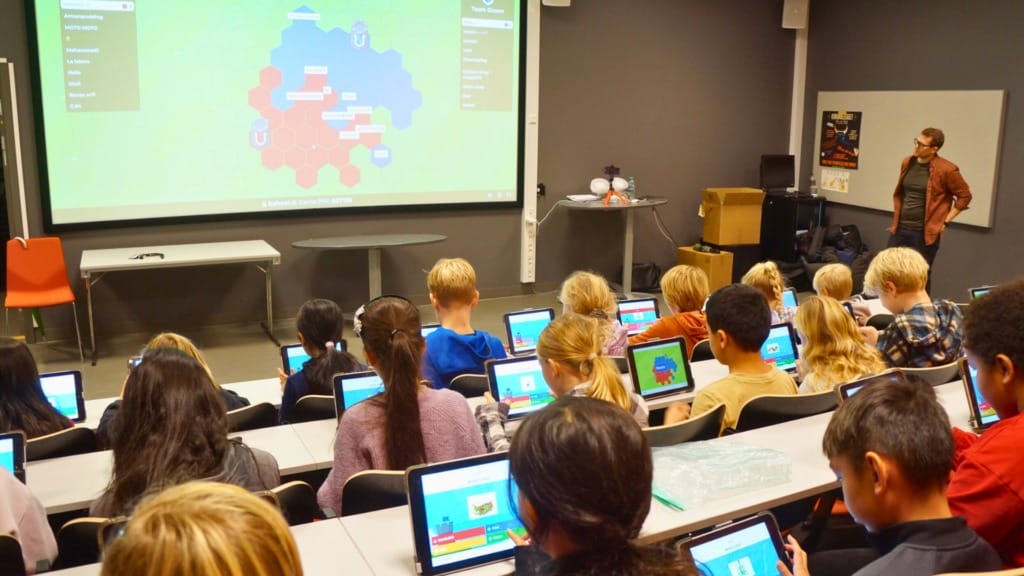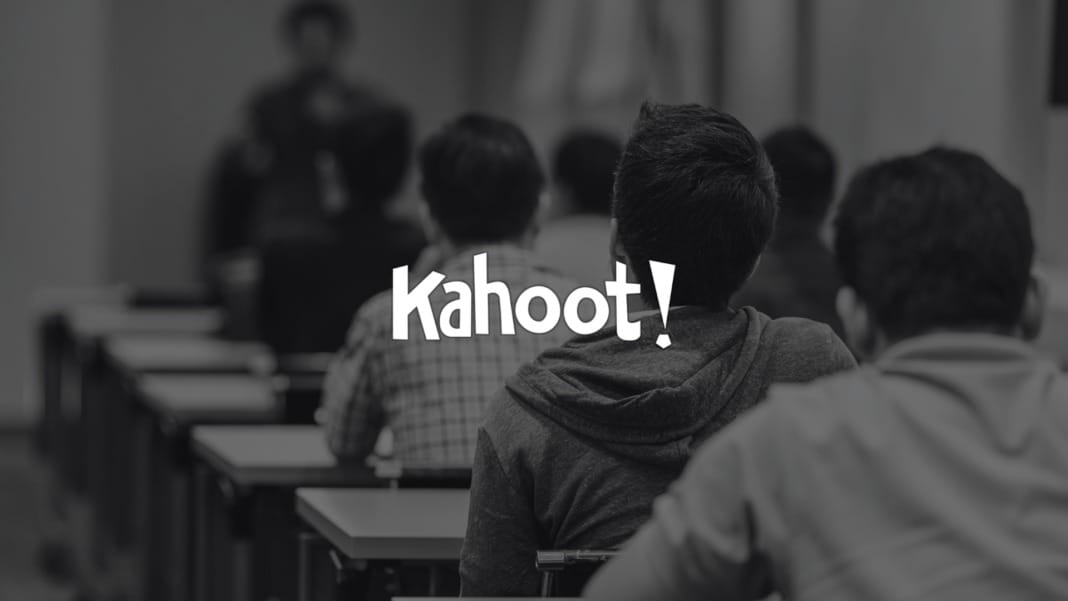Across the Asia Pacific, the way people learn is undergoing a significant transformation. As countries adopt a mobile-first approach, reimagine their education policies, and shift their focus towards skills-based and lifelong learning, there is growing pressure on learning providers to meet the evolving needs of both students and working professionals.
Several converging forces drive these changes. Mobile internet penetration is high, especially among younger populations, and education reforms are increasingly prioritising practical skills and employability over rote memorisation. In parallel, the workplace is demanding continuous upskilling, flexible learning formats, and digital-first experiences. As a result, learners across APAC are seeking platforms that offer convenience, personalisation, and relevance.
Kahoot! is a global learning platform that is known for its game-based learning approach and for delivering engaging learning experiences for learners of all ages. The company has committed to a localisation-first approach, invested in AI-powered features to reduce preparation time and improve learner outcomes, and expanded its reach across both schools and companies. With over 200 million users and 1 million teachers in the region last year, Kahoot! is positioning itself as a key player in the Asia Pacific’s education and training landscape. Its new regional headquarters in Singapore reflects a growing commitment to building solutions tailored for the region’s future.
Localisation and regional presence as a foundation for growth
Asia Pacific’s diversity poses unique challenges for education platforms. Language differences, curriculum variations, cultural expectations, and levels of digital maturity all contribute to shaping how learning is delivered and consumed. A standardised approach often falls short.
For Kahoot!, localisation is not just a feature. “We understand that there is no one-size-fits-all approach in APAC. The region is incredibly diverse, and our strategy is built around staying local, flexible, and relevant,” said Ahteram Uddin, Vice President Commercial, APAC at Kahoot!.

This strategy has led to the launch of native-language versions in key markets, including Thailand, Vietnam, Japan, Korea, and Indonesia. The Thai-language version, released in December 2024, enabled the company to record over 24 million participants in Thailand within 12 months, with more than 130,000 teachers utilising the platform. In Vietnam, localisation was introduced in April 2025, and early results show a surge in educator sign-ups and classroom adoption. In Indonesia, usage continues to grow steadily following the launch of Bahasa Indonesia in early 2024.
“Learning in one’s mother tongue has been consistently shown to enhance comprehension, retention, and long-term learning outcomes,” said Uddin, referencing UNESCO’s position that first-language instruction is essential for effective education, especially in multilingual regions like Southeast Asia. “For Kahoot!, we believe that localisation goes beyond translation. It is about creating an experience that feels intuitive, relevant, and ready to use from day one.”

Singapore, where Kahoot! has established its APAC headquarters and plays a vital role in supporting this regional strategy. The city-state’s robust infrastructure, emphasis on lifelong learning, and digital-forward mindset provide a solid foundation for business development, product testing, educator onboarding, and partnership management. “Singapore is more than a regional HQ—it’s a launchpad for innovation and growth across APAC,” said Uddin. “From here, we lead regional partnerships, product localisation, and co-creation efforts with schools, enterprises, and government stakeholders.”
AI is driving scalable, personalised learning experiences
Personalisation and efficiency are key to meeting the demands of educators and learners. AI has become central to Kahoot!’s efforts to offer a scalable and tailored experience. According to Uddin, “Teachers today are busier than ever. With our award-winning AI-powered generator, educators can create interactive lessons or quizzes from a topic, document, website, slide deck, or even a Wikipedia article in minutes instead of hours.”
These tools aim to reduce the manual burden on teachers, allowing them to focus more on engaging with students and less on content creation. This has been particularly valuable in developed markets like Singapore and Japan, where teachers often face tight schedules and curriculum pressures. In Singapore, science teacher Sabina Mammadova utilises Kahoot!’s AI features to quickly identify knowledge gaps and reinforce key concepts in the classroom.

On the learner’s side, AI-powered features such as smart note scanning enable students to convert handwritten notes into flashcards or practice quizzes. These active recall-based tools are designed to increase motivation and improve long-term retention. As students increasingly integrate AI tools into their study routines, responsible usage becomes crucial. Kahoot!’s 2024 Study Habits Snapshot revealed that 70% of students in the US already use AI for studying or assignments. “It’s important to give them tools that help them use AI responsibly, to enhance—not replace—the learning process,” Uddin said.
For corporate trainers, Kahoot!’s AI tools help generate custom learning content and transform routine business presentations into interactive sessions with polls and quizzes. This flexibility supports real-time learning and performance tracking across departments and locations.
Workplace learning and education are increasingly connected
The boundary between education and workplace learning is becoming increasingly porous. As today’s students transition into the workforce, they carry with them expectations for learning that are mobile-first, gamified, and interactive.
Kahoot! has experienced a 50% year-over-year increase in corporate adoption across the APAC region. “We’re seeing strong momentum in the corporate space as companies rethink how they deliver training, onboarding, and internal comms,” said Uddin. “With Kahoot!, learning at work becomes something people want to engage with, instead of just a box to tick.”
The trend is backed by wider market research. A LinkedIn Learning report found that 94% of employees in APAC would be more likely to stay with employers who invest in professional development. As companies face pressure to retain talent, especially among Gen Z, learning and development (L&D) programmes are becoming a strategic priority.

Kahoot!’s mobile-first design and AI-powered content creation tools make it easier for HR teams to deliver personalised, bite-sized training. A recent report by Kahoot! found that 62% of trainers said Gen Z employees prefer mobile apps for training, while 48% cited online tools, and others pointed to video and social media content as effective formats.
These insights are shaping how Kahoot! supports corporate L&D teams across a range of industries, from finance and logistics to education and healthcare. “Professionals are adopting our AI-powered content generator to transform standard business presentations into more dynamic, interactive sessions with quizzes and polls that drive better engagement and knowledge retention,” said Uddin.
APAC as a testbed for future-ready learning innovation
Asia Pacific’s combination of mature and fast-growing markets makes it a unique testing ground for digital learning innovation. Countries such as Singapore, Japan, and Australia offer well-developed infrastructure, robust policy frameworks, and a willingness to experiment with digital technologies. Meanwhile, emerging markets such as Vietnam, Indonesia, and the Philippines present opportunities to build scalable models that address access and affordability.
Kahoot! sees this diversity as a strength. “In markets like Singapore, Japan, and Australia, we focus on deeper integration. We ensure that we align with local curriculum standards in schools and embed Kahoot! into enterprise learning systems,” said Uddin. “In emerging markets, our priority is accessibility. This means local language support, mobile-first design, and a freemium model that helps Kahoot! scale across public schools and community learning environments.”
Regional policies are also accelerating innovation. Thailand 4.0, Vietnam’s National Digital Transformation Plan, and Singapore’s SkillsFuture initiative are all driving demand for digital learning solutions. These frameworks provide a backdrop for collaboration between governments, schools, and private-sector partners.
Kahoot!’s regional footprint, which includes offices in Singapore, Japan, and Australia, enables it to stay close to these developments. “Whether it’s piloting new AI-powered features or testing content formats in classrooms and workplaces, insights from this region directly inform how we refine and roll out our global offerings,” Uddin said.
With a strategy grounded in localisation, cross-sector integration, and continuous innovation, Kahoot! is not only adapting to Asia Pacific’s changing learning needs—it is helping shape what the future of education and training could look like.





